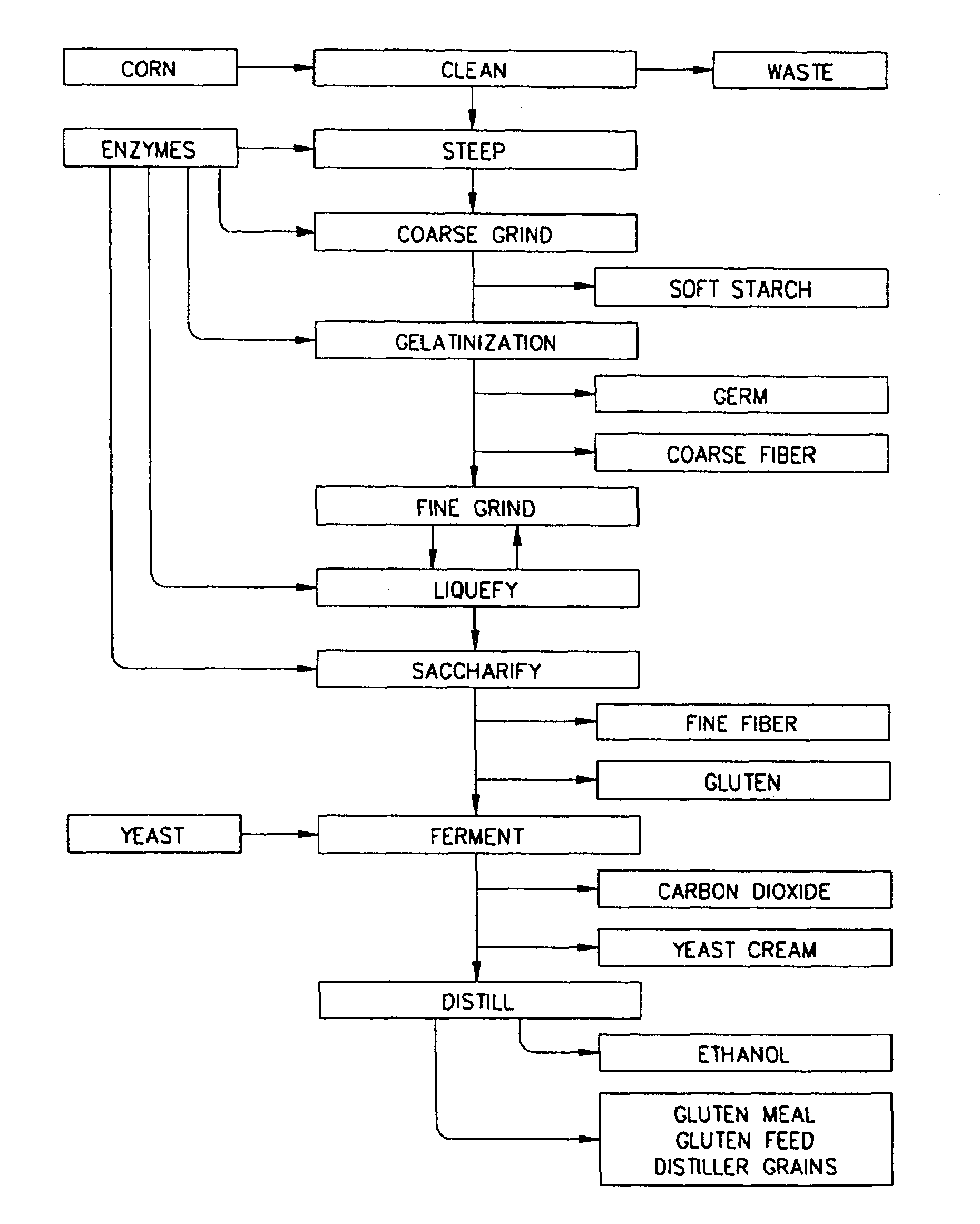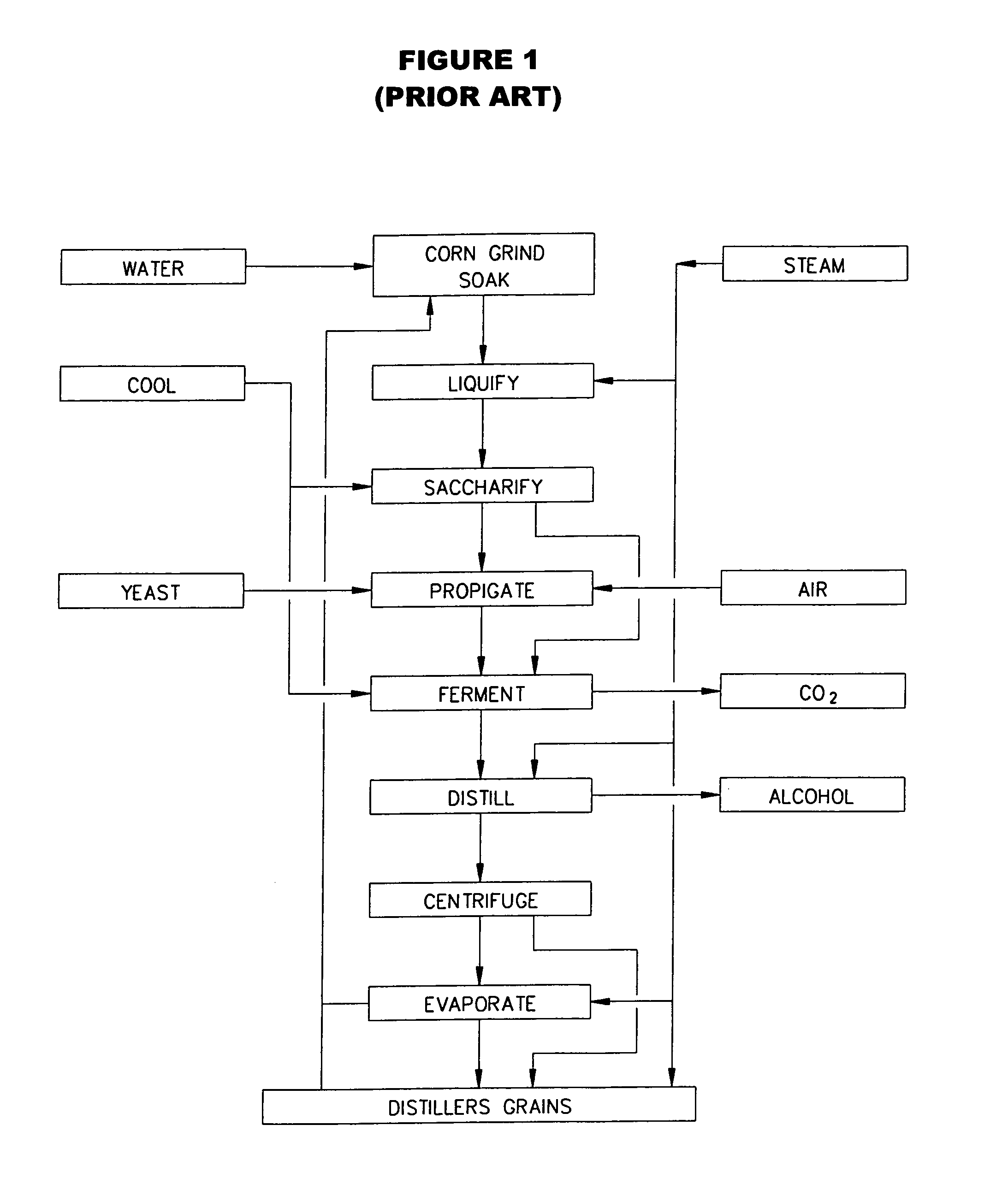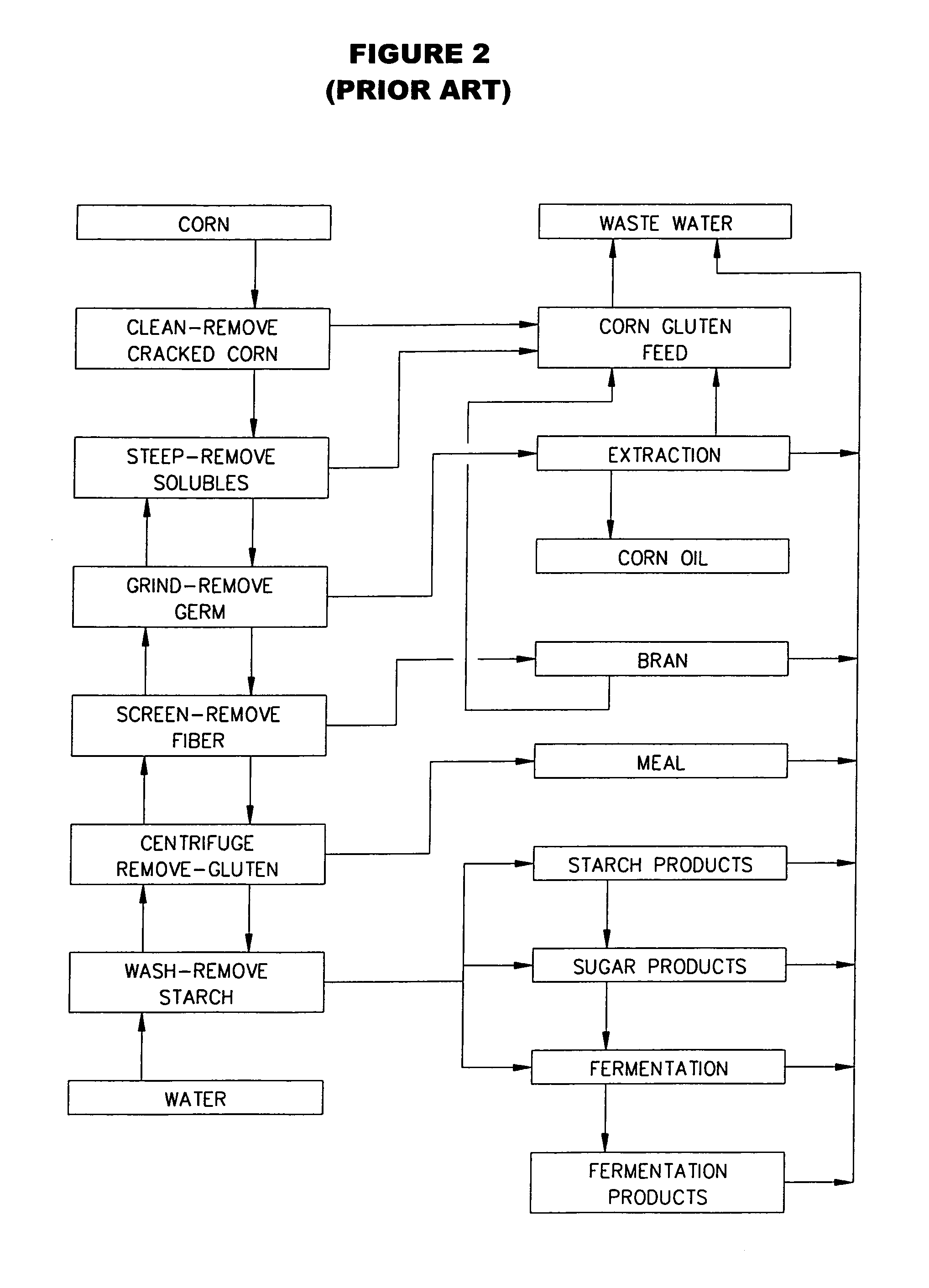Corn refining process
- Summary
- Abstract
- Description
- Claims
- Application Information
AI Technical Summary
Benefits of technology
Problems solved by technology
Method used
Image
Examples
Embodiment Construction
1. The Invention in General
[0043]The process of this invention refines corn. The process separates the various corn fractions and chemically converts the starch to glucose and the glucose to ethanol. The overall process is illustrated in simplified form in FIG. 3. Omitted for clarity are water and steam, two important raw materials for the process. Also omitted for clarity are recycle lines, separations, minor by-product lines, etc. FIG. 4 illustrates the overall process in more detail. The stream containing the starch (and later containing the starch derivatives glucose and ethanol) is considered the primary stream because of its size and economic importance. Various corn components are optionally isolated (removed from the primary stream) at different steps of the process. In general, it is preferred to isolate these components for a variety of reasons, including the fact that the quality and nutritional value of the components deteriorate as the processing continues. These isolat...
PUM
| Property | Measurement | Unit |
|---|---|---|
| Temperature | aaaaa | aaaaa |
| Temperature | aaaaa | aaaaa |
| Temperature | aaaaa | aaaaa |
Abstract
Description
Claims
Application Information
 Login to View More
Login to View More - R&D
- Intellectual Property
- Life Sciences
- Materials
- Tech Scout
- Unparalleled Data Quality
- Higher Quality Content
- 60% Fewer Hallucinations
Browse by: Latest US Patents, China's latest patents, Technical Efficacy Thesaurus, Application Domain, Technology Topic, Popular Technical Reports.
© 2025 PatSnap. All rights reserved.Legal|Privacy policy|Modern Slavery Act Transparency Statement|Sitemap|About US| Contact US: help@patsnap.com



